
Tragus Infection Usually Occurs After Piercing
Ear piercing is considered to be the most popular and the most common type of body modification. It is not restricted any more just to the earlobe as other parts of the ear can also be pierced. Tragus piercing is one of those less traditional types of ear piercing. The tragus is a small part of the ear just outside the ear canal. The tragus is made mostly of cartilage and it does not contain many nerve endings, which is why this kind of piercing is not that painful. The cartilage in the tragus is fairly thick so the piercer must apply additional pressure in order to pierce it, which may cause some discomfort. All different types of piercings are susceptible to infection and in most cases the infection occurs as a result of improper aftercare and poor hygiene. Having a tragus piercing done by an experienced and reputed person in a salon that is clean, sanitary and professional is vital for the condition of the piercing. It must be done with clean sterile equipment and in a sterile environment, otherwise bacteria and other harmful organisms may penetrate the piercing, causing an infection.
Symptoms
Some redness, pain and swelling are to be expected in the first few days after the piercing is done. If the symptoms persist or increase or if they get accompanied by pustules or a discharge from the piercing, those might be signs of infection. When the infection occurs it is vital not to remove the jewelry. This will only trap the infection inside and the body will not be able to drain the channel properly.
Piercing Care and Infection Treatment
One must clean the piercing in the period of healing, two or three times a day, until it heals completely. Cleaning is best done with a saline solution, but it should not contain too much salt as it may irritate the piercing. Alcohol and peroxide are not recommended for piercing care. Wearing the proper jewelry is particularly important in the first period after the piercing is made. Materials that are considered to be safe for tragus piercing are titanium, gold and platinum, while other materials may not fit well and may also cause the infection. Infection should be treated by soaking the piercing in saline solution frequently and possibly with antibiotic topical creams and ointments. The piercing should not be touched except for cleaning and hands must be absolutely clean.
Is Cartilage Piercing Bump Worse?
Cartilage piercings are quite popular, expanding more and more each year and becoming a widely supported trend. The cartilage is made of a thick, elastic tissue and it is pretty much prone to infections and many different complications. Those who pierce their cartilage often experience bumps appearing on the surface of the piercing, being aesthetically negative. These bumps should be treated adequately. There are several types of bumps which can appear onto one's piercing spot for various reasons. The most benign growth of this type are boils. Even though these are painful and manifest through bumps full of pus which can possibly get discharged upon bursting, these bumps disappear and the skin regenerates on its own. Boils may also leave scars next to piercing spots and may affect the normal healing process. For those who do not know, one of the worst case scenarios related to the bumps on cartilage piercings are the so called keloid scars. These scars are triggered by excessive tissue repair and are much more frequent with people who have darker skin. Keloids are quite visible since they are significantly darker than the rest of one's skin. Perhaps the biggest problem with keloid scars is the fact that they are rather difficult to get rid of.
How to Treat Bumps on Pierced Cartilage?
One of the best treatments for medium problems of this type, involving boils and minor scarring, is soaking the piercing spot in a saline solution. This solution is made by dissolving a quarter of a teaspoon of sea salt into 8 ounces of water. One should taste the mixture before applying it, making sure that it is not saltier than tears. The solution needs to be applied onto the spot and left there for about 10 minutes before being rinsed off with water. Sometimes crusts may appear on the spot after it dries but they can be removed rather easily simply by utilizing cotton swabs or similar methods. Teabags of chamomile tea can also be placed onto the piercing spot and they need to be left there until they get cold. The process needs to be repeated for about 15 minutes, at least 2 times per day. Crushing an Aspirin, mixing it with a bit of water and placing the paste onto the piercing can be of assistance too, when done 2 or 3 times a day.
- www.nhs.uk/conditions/ear-infections/
- www.nhs.uk/conditions/body-piercing/
- Photo courtesy of Mark Crossfield by Flickr: www.flickr.com/photos/manc/344523667


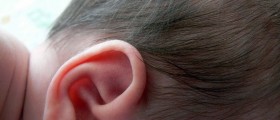

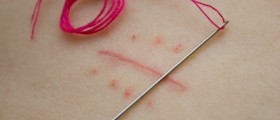
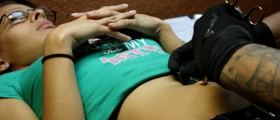


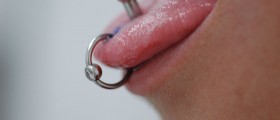
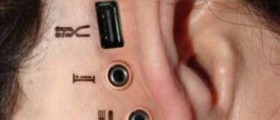







Your thoughts on this
Loading...